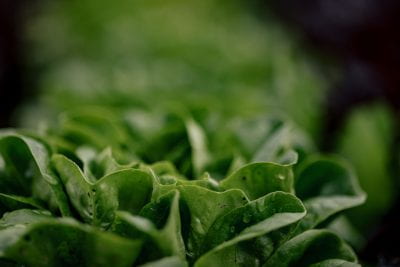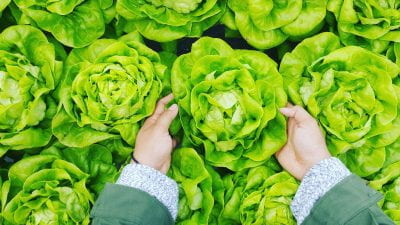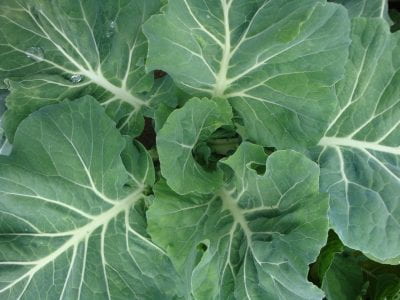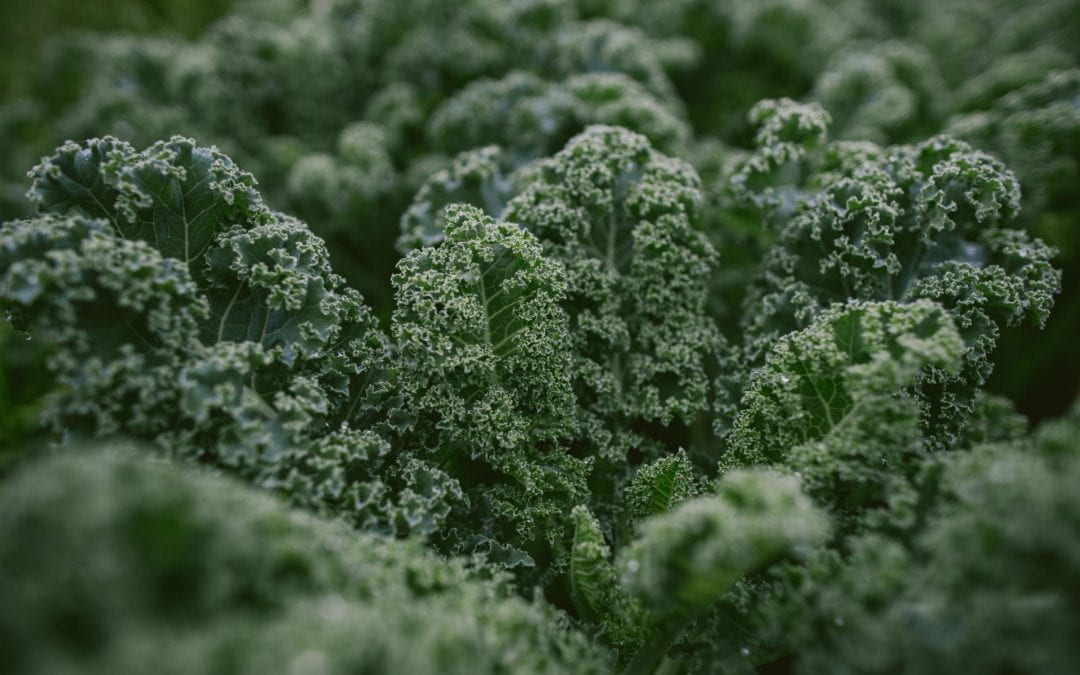Greens are one of the most profitable vegetable crops for market farmers to grow, and they are a great entry-level crop for beginning farmers. Greens offer a quick turnaround and a high price per pound, meaning that a grower can churn out profits on a small piece of land. This post will provide an overview of why and how to grow greens for the market, but if you are interested in digging deeper into the topic, we will be hosting a Growers School on Greens at the CAFF Farm on Sunday, October 9th.
 Part of what makes greens an excellent crop for market farmers is the demand. Families are accustomed to buying a box of washed spring mix from the grocery store every week and serving salads with dinner, so picking up a bag of local greens from the farmers market is an easy sell. Restaurants also need a consistent supply of mixed greens for salads, lettuce for burgers and sandwiches, and cooking greens for other dishes. If you can master the art of growing high-quality and consistent greens, it will not be hard to find a market.
Part of what makes greens an excellent crop for market farmers is the demand. Families are accustomed to buying a box of washed spring mix from the grocery store every week and serving salads with dinner, so picking up a bag of local greens from the farmers market is an easy sell. Restaurants also need a consistent supply of mixed greens for salads, lettuce for burgers and sandwiches, and cooking greens for other dishes. If you can master the art of growing high-quality and consistent greens, it will not be hard to find a market.
There are many greens to choose from, and the term covers various species of leafy vegetables. Lettuce is the most recognizable of the leafy greens and can be grown as head lettuce, leaf lettuce, or harvested as baby leaves for a mix. Spinach is another popular leafy green that can be grown for mature leaves but is most popular harvested as baby leaves that are washed and sold ready for salads.
 Asian greens are another category in and of themselves that contain many different species, each with its own flavor, texture, and shape. Pac choi, tatsoi, mizuna, and Tokyo Bekana are a few of the more common Asian greens that can be grown to maturity and sold as a bunch or grown as baby leaves and added to a salad mix for more variety of flavor, color, and shape. Like Asian greens, mustard greens make a great add-in to a salad mix for a pop of spicy flavor, or they can be grown to maturity as cooking greens that can be added to a stir-fry or soup. We can’t forget kale, Swiss chard, and collard greens, which can also be harvested as baby leaves for salads or grown to maturity and bunched for cooking.
Asian greens are another category in and of themselves that contain many different species, each with its own flavor, texture, and shape. Pac choi, tatsoi, mizuna, and Tokyo Bekana are a few of the more common Asian greens that can be grown to maturity and sold as a bunch or grown as baby leaves and added to a salad mix for more variety of flavor, color, and shape. Like Asian greens, mustard greens make a great add-in to a salad mix for a pop of spicy flavor, or they can be grown to maturity as cooking greens that can be added to a stir-fry or soup. We can’t forget kale, Swiss chard, and collard greens, which can also be harvested as baby leaves for salads or grown to maturity and bunched for cooking.
A great place to start when selecting what greens to grow is to look through a seed catalog like Johnny’s Selected Seeds to get a handle on the variety of options available. Seed companies like Johnny’s will also sell seed mixes that include various species that can be grown together and harvested all at once as a mix. Start with varieties that you are familiar with or that you know your customers will recognize. Feel free to branch out to try new and unusual varieties, but most of your customers will gravitate to what they are already familiar with buying at the grocery store.
 How you grow your greens depends on how you intend to harvest and market them. If you intend to sell heads of Romaine lettuce, you will grow those plants much differently than if you intend to sell a bag of washed greens mix. Head lettuce and other greens grown for mature leaves are grown as individual plants, started in the greenhouse, and transplanted into the field at a set spacing of around 8-12 inches between plants. There are types of head lettuce, such as Johnny’s salanova lettuce, grown as plants but harvested to go into lettuce mixes. However, the most common method for growing a salad mix is to broadcast seed into a bed and harvest as cut-and-come-again. The method results in a full bed of salad mix or a single species of baby leaves that can be harvested with a knife or more efficiently at scale with a greens harvester.
How you grow your greens depends on how you intend to harvest and market them. If you intend to sell heads of Romaine lettuce, you will grow those plants much differently than if you intend to sell a bag of washed greens mix. Head lettuce and other greens grown for mature leaves are grown as individual plants, started in the greenhouse, and transplanted into the field at a set spacing of around 8-12 inches between plants. There are types of head lettuce, such as Johnny’s salanova lettuce, grown as plants but harvested to go into lettuce mixes. However, the most common method for growing a salad mix is to broadcast seed into a bed and harvest as cut-and-come-again. The method results in a full bed of salad mix or a single species of baby leaves that can be harvested with a knife or more efficiently at scale with a greens harvester.
Most greens are cool-season crops, meaning you will get the best production in the fall and spring – or possibly throughout the winter if grown in a high tunnel. Some greens, such as collards and Swiss chard, can handle summer temperatures, but most will either bolt or become bitter as temperatures increase in late spring. Some growers in the mid-South, such as Ray Tyler of Rose Creek Farm, have successfully grown lettuce in the summertime using shade cloth and overhead irrigation. But for the most part, you can expect greens harvests to be minimal from late May to early September.
 The profitability of greens on your farm will depend to a large extent on your markets and growing proficiency. The urban farmer Curtis Stone from British Columbia promotes the fact that salad mix makes up 25% of his farm revenue (with his 0.3-acre urban farm grossing over $75,000 per season). Rose Creek Farm, mentioned above, has developed a business around year-round lettuce production, increasing their farm income on less land by focusing on these high-value produce crops.
The profitability of greens on your farm will depend to a large extent on your markets and growing proficiency. The urban farmer Curtis Stone from British Columbia promotes the fact that salad mix makes up 25% of his farm revenue (with his 0.3-acre urban farm grossing over $75,000 per season). Rose Creek Farm, mentioned above, has developed a business around year-round lettuce production, increasing their farm income on less land by focusing on these high-value produce crops.
With greens, there is much potential for profits. But first, you must develop a strategy and hone your skills. Our Growers School on Sunday, October 9th, from 1:30-4:30 pm at the CAFF Farm in Fayetteville, will be the perfect opportunity for you to gain the knowledge and resources you need to start on the path of becoming a successful greens grower. Register today at NWAFarming.org!


Recent Comments